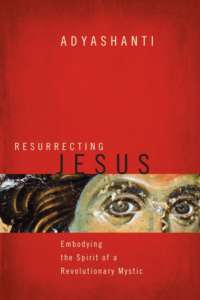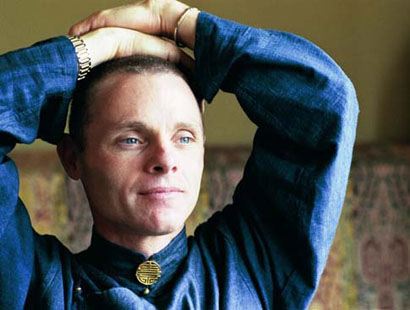Adyashanti is a fascinating man, and his new book Resurrecting Jesus: Embodying the Spirit of a Revolutionary Mystic (Sounds True) is equally fascinating. There’s an appealing pluralism to both the man and the book.

Although he didn’t have a particularly religious upbringing, Adyashanti’s connection to the Jesus story began during his childhood, when he was still Steven Gray, living in Cupertino, California. He grew up in a family that frequently discussed spirituality and religion and had a grandfather he describes as having “embodied the Christian spirit of generosity and love.” As a teenager Steven was passionate about bike racing and meditation, but meditation ultimately triumphed and he went on to study Zen Buddhism. At 31 Steven had a profound awakening experience and changed his name to Adyshanti (which means primordial peace) and became a spiritual teacher. It was during this period that he began to read about the Christian mystics, especially St. Therese of Lisieux, which shone a different light on the Jesus story, illuminating Adyashanti’s understanding of Zen. He was rewired. As he put it, “That’s a very powerful dynamic, when the mystery of our own being meets a really extraordinary story. That meeting can elicit something quite transformative.”
All of Adyashanti’s spiritual exploration, practice, and growth inform his method of teaching, which encompasses many traditions including Zen Buddhism, Advaita Vedanta (Hindu philosophy), and the Jesus story. “The Truth I point to is not confined within any religious point of view, belief system, or doctrine,” he has said, “but is open to all and found within all.”
Resurrecting Jesus reflects this. The Jesus Adyashanti shows us is a revolutionary mystic, “breaking through all the false boundaries and imaginary dividing lines that separate us as human beings and separate us from the world.” Adyashanti recognizes that “the Western mind has been dominated by Christianity for more than two thousand years, so whether you’re Jewish, Buddhist, Muslim, or even atheist, you can’t help but be impacted by the story. This fact alone makes the story worth examining, and in doing so, we might find that the Jesus we’ve been told about is very different from the Jesus in the Gospels. That’s what I hope to investigate.”
And he does.
One way he accomplishes this is by writing about miracles. And when better to explore them than around Easter, as many are celebrating the miracle of Jesus’s resurrection?

Anyone familiar with the Jesus story can’t help but be fascinated by Jesus the miracle worker. To me, whether the miracles described in the Gospels really happened or not isn’t ultimately an important question. A miracle is simply something we can’t explain with rational thought processes or scientific analysis. From that perspective, miracles are very real. Even awakening itself, when it occurs, seems like a miracle. When we see with the eyes of divine presence, there are miracles everywhere.
Miracles All Around Us
The more conscious we become, the more powerful we become. We don’t necessarily become miracle workers, but as we begin to awaken and our state of consciousness opens, different capabilities within us come online and are available to us. As you come into harmony in life, then mysteriously, almost miraculously, life seems to come into harmony with you. There is a sense that everything is unfolding just as it needs to, that everything is right on time. As we let go of trying to control life, trying to force it in the direction that the ego wants it to go, life has a way of literally responding to our state of consciousness. And that’s a miracle—that as your state of consciousness transforms, life’s relationship with you transforms as well.
As you come into harmony in life, then mysteriously, almost miraculously, life seems to come into harmony with you. There is a sense that everything is unfolding just as it needs to, that everything is right on time.
Miracles are all around us; we just have to open our eyes and see. The more we open to the reality of our own divinity, the more we start to perceive life as a miraculous event. And though the miracles of our everyday lives may pass unnoticed by the self-obsessed mind, they are there nonetheless. It seems to me that a very intimate aspect of awakening is becoming aware of the daily miracle we move through, the miracle called life. Then, the big miracles of the kind we find Jesus undertaking can draw our attention to the miracle of our own lives.
Adapted from Resurrecting Jesus: Embodying the Spirit of a Revolutionary Mystic, by Adyashanti. Copyright © 2014 by Adyashanti. Published by Sounds True.



